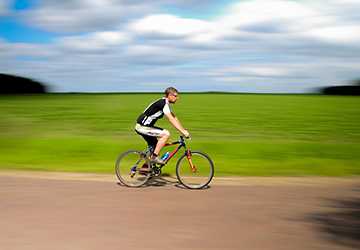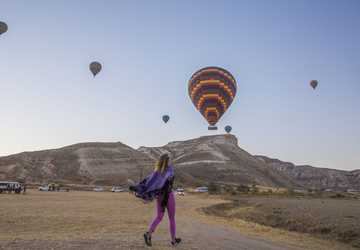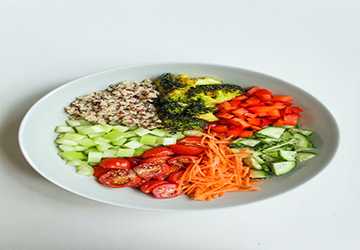The Complete Guide to Backpacking in Southeast Asia
With its diverse landscape of volcanoes, rainforests, rice fields, beaches and coral reefs, Southeast Asia is one of the most exciting and accessible regions for solo travelers. The idea of backpacking Southeast Asia has attracted many tourists. Backpackers will never forget their time spent in Southeast Asia thanks to the diverse cultures, stunning scenery and low prices.
However, planning a backpacking trip through this diverse region can be overwhelming.
This in-depth guide will walk you through everything you need to know about backpacking in Southeast Asia - a smooth experience you'll never forget.
Itinerary research and planning
Before embarking on a Southeast Asia backpacking trip, it's important to do your homework. First, list the country you want to visit. Consider factors such as visa requirements, climate and must-see attractions. While we encourage travelers to be flexible and understand where their journey will take them, it may be helpful to have a rough itinerary that takes into account seasonality and climate change.
Budget:
The low cost of living in Southeast Asia is a major selling point for backpacking. However, it is crucial to travel on a budget and allocate funds accordingly. Set spending limits for accommodation, transportation, meals, activities, visas, etc. Find out the average cost for each country to get an idea of where your budget falls. Keep in mind that unexpected charges may arise. Therefore, it is recommended to prepare a buffer for emergencies.
Best time to travel:
Choosing the right time to travel to Southeast Asia is crucial due to the region's variable climate. In most places, November to February are the most pleasant months. On the other hand, there is a trade-off between pleasant temperatures and manageable crowds during the low seasons (March-April and September-October). Still, it's a good idea to learn more about each country's climate.
Packaging Basics:
What you bring with you on your trip to Southeast Asia will also be affected by the time of year you travel. Is it likely to rain while you're away? Then you should put on a raincoat and carry a bag with you against the rain. There are certain items every traveler should have on hand, such as a first aid kit and universal travel adapter.

Transportation:
Visiting Southeast Asia is an adventure in itself. Buses and trains are popular and inexpensive options for traveling between countries, while local transport such as tuk-tuks and motorcycle taxis are also widely available in cities. Public transport in Southeast Asia has always been cheap compared to public transport in the West, and travel is often a highlight of a holiday, not least because of the chance to make friends with local tourists.
Consider booking flights with longer distances or limited time. Overland travel between neighboring countries is also relatively easy if you are patient and have the proper documentation.
Accommodation options:
The area offers a variety of accommodation options for every travel budget. Backpacker hostels are common because they are inexpensive and offer a great opportunity to meet other travelers. While luxury resorts attract those looking for a more luxurious vacation, homestays and guest houses offer a more authentic cultural experience.
Local cuisine:
Southeast Asia is a paradise for food lovers, with diverse and delicious cuisines. Take the opportunity to try local delicacies such as pad thai in Thailand, pho in Vietnam and fried rice in Indonesia. The night market especially is a great place to sample different cuisines at affordable prices. You'll be impressed by the sights and smells of noodle factories, tangy spice fumes and rows of shiny fried insects.
Be adventurous and try street food, but be careful about hygiene and choose busy stalls.
Health and Safety:
Although Southeast Asia is generally a safe place, precautions are crucial. Make sure your valuables are safe and secure, and carry copies of your passport and other necessary documents. Always heed the latest travel warnings and be on the lookout for scams.
Getting vaccinated and getting comprehensive travel insurance are some of the most important travel tips to give before you go. Travelers who take standard food and water hygiene precautions and educate themselves about vaccination and malaria prevention requirements before departure usually return home with nothing worse than an upset stomach.
Cultural Etiquette:
Know the cultural norms of the places you visit to show respect for the locals and their beliefs. Please dress modestly when visiting places of worship, remove shoes upon request, and respect local customs and traditions. It also helps to learn some basic words in the local language.

Must-see destinations:
Southeast Asia is rich in natural and cultural treasures, from the ancient ruins of Angkor Wat in Cambodia to the postcard-perfect coast of Phi Phi Island in Thailand and Halong Bay in Vietnam. Find the place that interests you the most and put it at the top of the list.
Here are some must-see places in Southeast Asia outside of Thailand, Cambodia, and Vietnam:
● Borobudur Temple
● Kansai Falls
● Tana poop
● Wat RongKhun - White Temple
● Batu Caves
● KL's magnificent temples and incredible street food
● Bali has beautiful beaches, especially Kuta Beach.
● Mount Bromo, Indonesia
● Khao Sok National Park, Thailand
● Kampot with great river views
Conclusion
Backpacking in Southeast Asia is an exciting and enriching experience, the perfect blend of adventure, cultural immersion and natural beauty. By doing thorough research, planning your travel budget, and being prepared, you can make the most of your travels in this diverse and fascinating region. Experience a vibrant culture, sample delicious cuisine and explore stunning landscapes. Southeast Asia has something for every backpacker, from ancient temples in Cambodia to stunning beaches in Thailand. So pack your bags, venture into the unknown and get ready for an unforgettable adventure in this unique part of the world.




















